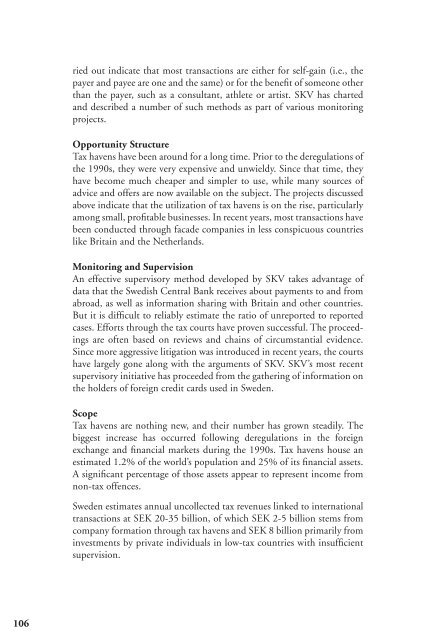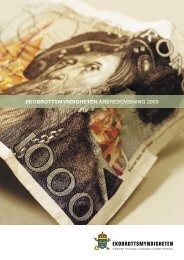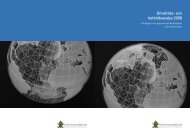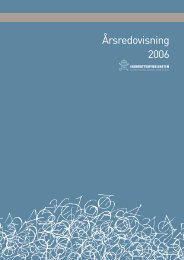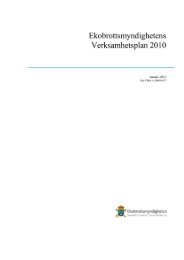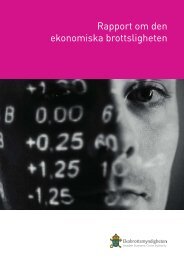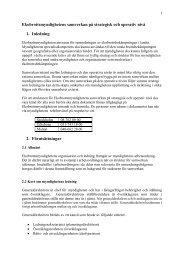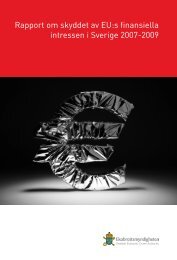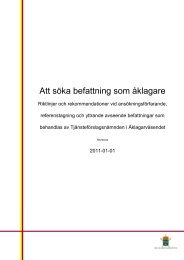Economic crime report 2004 - Ekobrottsmyndigheten
Economic crime report 2004 - Ekobrottsmyndigheten
Economic crime report 2004 - Ekobrottsmyndigheten
Create successful ePaper yourself
Turn your PDF publications into a flip-book with our unique Google optimized e-Paper software.
ied out indicate that most transactions are either for self-gain (i.e., the<br />
payer and payee are one and the same) or for the benefit of someone other<br />
than the payer, such as a consultant, athlete or artist. SKV has charted<br />
and described a number of such methods as part of various monitoring<br />
projects.<br />
Opportunity Structure<br />
Tax havens have been around for a long time. Prior to the deregulations of<br />
the 1990s, they were very expensive and unwieldy. Since that time, they<br />
have become much cheaper and simpler to use, while many sources of<br />
advice and offers are now available on the subject. The projects discussed<br />
above indicate that the utilization of tax havens is on the rise, particularly<br />
among small, profitable businesses. In recent years, most transactions have<br />
been conducted through facade companies in less conspicuous countries<br />
like Britain and the Netherlands.<br />
Monitoring and Supervision<br />
An effective supervisory method developed by SKV takes advantage of<br />
data that the Swedish Central Bank receives about payments to and from<br />
abroad, as well as information sharing with Britain and other countries.<br />
But it is difficult to reliably estimate the ratio of un<strong>report</strong>ed to <strong>report</strong>ed<br />
cases. Efforts through the tax courts have proven successful. The proceedings<br />
are often based on reviews and chains of circumstantial evidence.<br />
Since more aggressive litigation was introduced in recent years, the courts<br />
have largely gone along with the arguments of SKV. SKV’s most recent<br />
supervisory initiative has proceeded from the gathering of information on<br />
the holders of foreign credit cards used in Sweden.<br />
Scope<br />
Tax havens are nothing new, and their number has grown steadily. The<br />
biggest increase has occurred following deregulations in the foreign<br />
exchange and financial markets during the 1990s. Tax havens house an<br />
estimated 1.2% of the world’s population and 25% of its financial assets.<br />
A significant percentage of those assets appear to represent income from<br />
non-tax offences.<br />
Sweden estimates annual uncollected tax revenues linked to international<br />
transactions at SEK 20-35 billion, of which SEK 2-5 billion stems from<br />
company formation through tax havens and SEK 8 billion primarily from<br />
investments by private individuals in low-tax countries with insufficient<br />
supervision.<br />
106


